Many of us who are privileged enough to live in the developed world take some basic services for granted. Immediate access to clean drinking water is perhaps the most useful advantage to our health and welfare that can be desired. The fact that water is piped directly to our kitchens, bathrooms and laundry rooms is one thing. The convenience that hot water comes out of one faucet is another. But, the benefits of being able to drink water straight from the tap water are far-reaching and life-altering.
“Blue are the life-giving waters taken for granted.
They quietly understand”
– Jimi Hendrix
All living things need water and, as humans, we need it to drink and we need it to wash. Here, we will address the drinking issue. In a pinch, bottled mineral water is an option. But, don’t rely too heavily on drinking bottled water as it is an antithesis to socially responsible travel. The negative environmental impact of plastic litter cannot be ignored. A simple solution to the plastic bottle problem is to treat the tap water. Bottled water isn’t necessarily always safe. Enterprising merchants have been known to fill bottles with untreated tap water. An unbroken seal is reassuring, but no guarantee. The price of bottled water can also add up during the course of, say, a year.
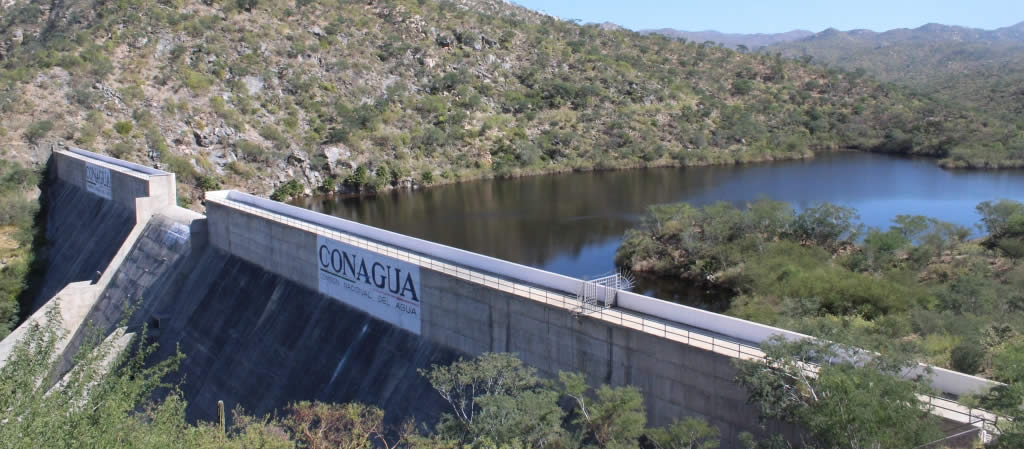
La Buena Mujer Dam supplies La Paz, Mexico with its drinking water
The best way to avoid water borne disease is to purify your water. Many purification systems produce clean, potable water quickly, and are not harmful to your health or the environment. If you are at all unsure about the quality of the drinking water, treat it with suspicion, then treat it with one or more of the following methods.
Boiling And Filters
Bringing it to a rolling boil for at least two minutes will do the trick. Water boils at lower temperatures at higher elevations. Generally, add one minute of boiling time for every 1000 feet, and be sure water boiled for tea at higher elevations has been boiled long enough. Some electric kettles have built in thermostats which switch the kettle off once the water has boiled. These won’t work well if you’re trying to boil water for five minutes. Boiling water usually requires fuel. If you are in an area where deforestation is a problem or cooking fuel is scarce, this may not be the best method to use.
Water filters are common and effective, but have their pros and cons. Pre-filter the water from a natural source. First, let the water sit and the debris settle, then pour/decant it through a filter. The most common filter is clean sand which can be put in a clean bandana or clean sock. This type of crude filter can be used to extract any solids floating in the water. Coarse filtration followed by fine filtration is necessary in many cases.

Cataratas do Iguaçu, Brazil
An adequate filter will remove 99.9999% of bacteria, 99.99% of viruses and 99.9% of cysts. This type of filter will cost several hundred dollars. Some filters come with charcoal or carbon, which can remove many chemicals from the water. Filters clog with debris, and a dirty filter breeds bacteria. Sterilizing and cleaning or changing the filter will become necessary, so you will need to carry spares. Filters can also be bulky and expensive. Filters combining charcoal or carbon with other stages that remove bacteria are available. The best option is to use a filter in conjunction with chemical treatment.
Small, light-weight portable filtration systems are becoming increasingly popular. LifeStraw offers a variety of products that filter everything from bacteria and microplastics to heavy-metals like lead.
Chemical Treatment
Chlorine is very effective and convenient. It can take as little as twenty minutes to have as much potable water as you can carry. Some people find it leaves an unpleasant taste, but there are products on the market such as Pristine that leave the flavor virtually unaltered. You can also filter any residual chlorine with charcoal or carbon.
Iodine is also convenient and effective. Again, some people dislike the taste, but a charcoal or carbon filter can remedy this. The treatment process is basically the same as chlorine. However, iodine can lead to gastrointestinal problems and other adverse effects if taken over a long period of time. Consult your doctor, especially if you have thyroid problems or are pregnant.

Treating water with a chlorine dioxide solution
No system can guarantee perfectly safe water every time. But, the more careful you are, the lower the risk of contamination will be. The more suspect the water is, a higher dose and a longer treatment time is necessary. If your water has an unpleasant taste, either due to the local nature of it or because of your purification system, squeeze some fresh lemon or lime into it. Adding flavoring crystals can leave a permanent taste in the container, and sugar can negate the hydrating effects of water.
Drinking Water Bottles
You will need to carry your treated water in something – usually a bottle of some sort. Disposable bottles can be reused to minimize your environmental impact. Be sure to wash the mouth of your bottle before drinking from it, as it may contain remnants of contaminated water from where you filled it. This can be done by loosening the cap a bit and squeezing some clean water out. This is also useful for rinsing fruit, vegetables and hands. If your water bottle doesn’t fit in the sink under the tap, use a cup or glass as an intermediate step. Brush your teeth with treated water, as untreated tap water will invariably find its way down your throat in the process.
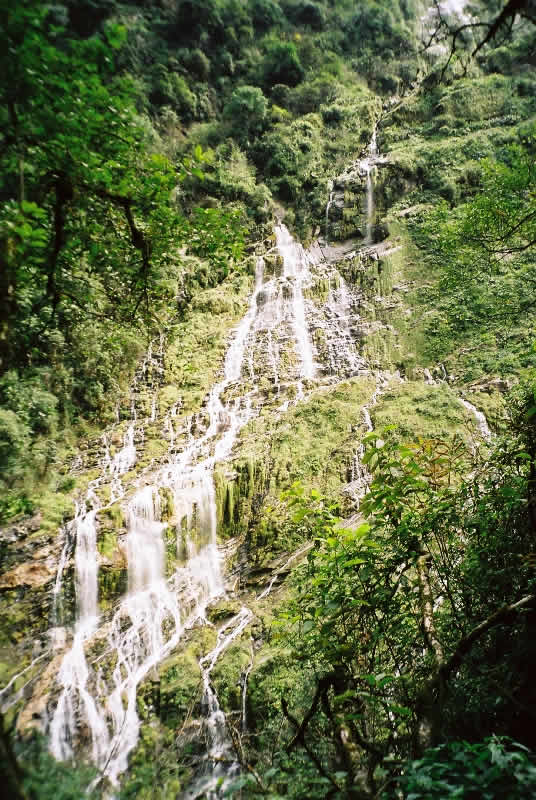
Waterfall in Nepal

Prayer Wheel in Nepal
An excellent way to carry water is in a two liter bladder with a hose and bite valve / nipple. Some companies like CamelBak manufacture packs with pouches specially designed to hold such a bladder. These can also serve as a “secret compartment” for your wallet.
Ice Ice Baby

Salmon Glacier near Hyder, Alaska
Ice should be avoided, as should ice cream. The ice used could be made with contaminated water, and the cream from unpasteurized milk. Fresh squeezed juices should be fine, provided they do not contain any water or ice. Coffee and tea are generally safe as they have probably been brewed with water boiled for at least two minutes.
Drinks packaged in aluminum cans and glass bottles, such as pop, beer and other liquor are OK. Just be careful about the rocks in your scotch-on-the-rocks, and be certain the bottle seal hasn’t been tampered with. Have beverages opened in front of you rather than served already opened. Make sure the glass from which you are drinking is clean. If it has been washed with suspect water, dry it off, or rinse it out with some pop, beer, etc.
Deciding on a drinking water treatment system can be daunting and confusing. The best course of action would be to visit a number of outdoor supply shops and compare spec sheets with various systems you find there. Talking with the staff, who probably have experience with these systems, and other travelers will help in making a decision as to which one is best for you.



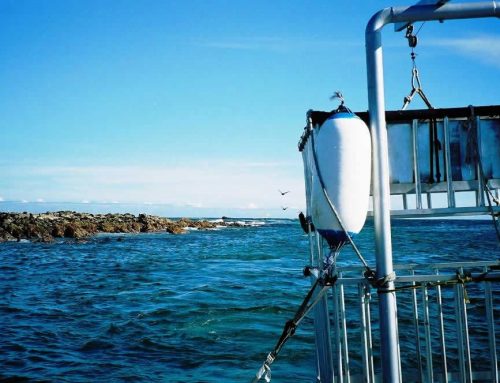
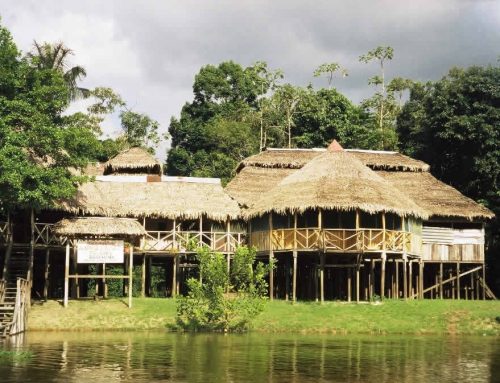



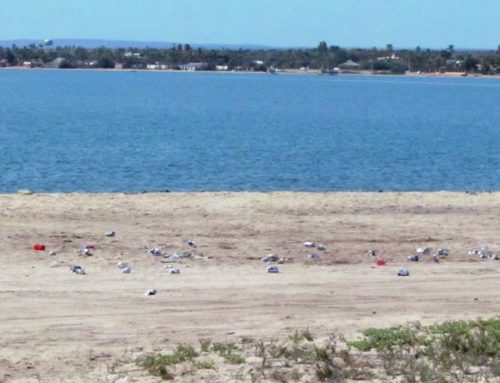

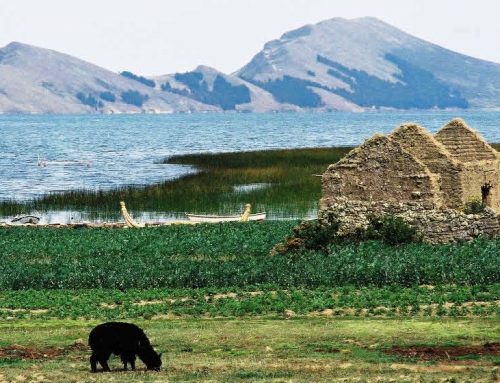
Leave A Comment